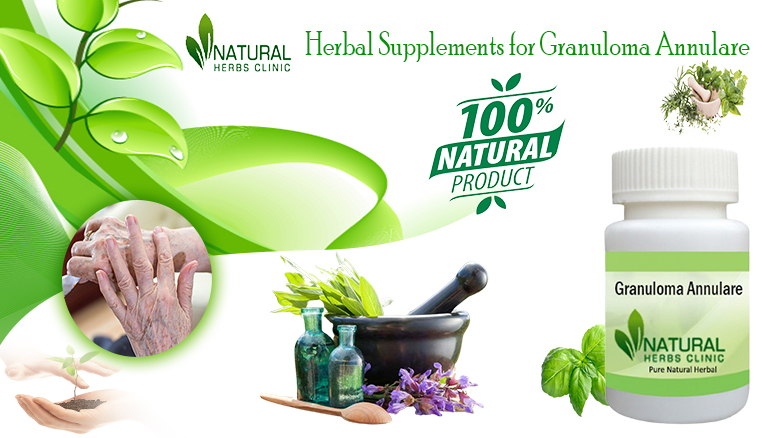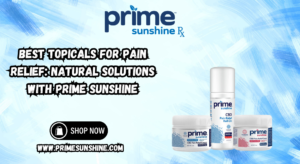
Herbal Supplements For Granuloma Annulare
Granuloma annulare is a common skin condition characterized by ring-shaped, raised, red or flesh-colored bumps that can appear anywhere on the body. While it’s generally harmless, granuloma annulare can be itchy and visually bothersome. Thankfully, a variety of treatments can help manage symptoms, reduce itching, and promote quicker healing. Here’s a guide on how to alleviate granuloma annulare effectively.
What is Granuloma Annulare?
Granuloma annulare is a chronic skin condition that causes ring-like patches of raised bumps. Although the exact cause of granuloma annulare is unknown, it is believed to be related to the immune system. Unlike other skin conditions, granuloma annulare isn’t contagious, nor does it cause lasting harm. However, the itchy, reddish lesions can lead to discomfort and self-consciousness.
Treatment Options to Heal the Skin and Stop the Itch
There are several approaches for Best Treatment for Granuloma Annulare, each aiming to reduce symptoms, relieve itching, and accelerate healing. Here’s a breakdown of the most effective options:
1. Topical Corticosteroids
Topical corticosteroids are often prescribed to reduce inflammation, alleviate itching, and help lesions fade faster. Applying a corticosteroid cream or ointment directly to the affected areas a few times a day can significantly relieve discomfort. It’s best to consult with a dermatologist to get a prescription-strength option suitable for your skin type.
2. Intralesional Corticosteroid Injections
In cases where granuloma annulare lesions are widespread or don’t respond well to topical treatments, intralesional corticosteroid injections may be recommended. A healthcare provider injects a corticosteroid directly into the affected areas to reduce inflammation more quickly. This treatment can offer faster relief for stubborn lesions but is typically only considered for more severe cases.
3. Cryotherapy
Cryotherapy involves freezing the affected area with liquid nitrogen, which can help shrink lesions and reduce their appearance. This treatment is commonly used for localized lesions and can provide visible results after a few sessions. However, cryotherapy should only be performed by a trained dermatologist, as it may cause temporary side effects like blistering or discoloration.
4. Phototherapy
Phototherapy, or light therapy, can be beneficial for widespread granuloma annulare. UVB light exposure can help control the immune response that triggers the condition. While this treatment may take several sessions to see significant results, it is non-invasive and generally effective for those with large or resistant lesions.
5. Oral Medications
For severe or widespread cases of granuloma annulare, oral medications may be considered. Options include anti-inflammatory drugs, immunosuppressants, or even antimalarial medications like hydroxychloroquine, which has shown effectiveness in some cases. Because these medications come with potential side effects, they are generally reserved for more persistent cases.
Natural and Herbal Approaches to Support Healing
If you’re looking for gentler, more natural options to ease the discomfort and help your skin heal, several herbal and home remedies may help relieve itching and reduce inflammation:
1. Aloe Vera
Aloe vera gel is renowned for its soothing and anti-inflammatory properties, making it ideal for granuloma annulare. Apply fresh aloe vera gel to the affected area twice a day to reduce itching and promote faster healing.
2. Turmeric
With its powerful anti-inflammatory and antioxidant properties, turmeric can help control immune responses that may contribute to granuloma annulare. You can create a turmeric paste using water or coconut oil and apply it to the skin, or consider adding turmeric supplements to your daily routine. Among the various supplements for Granuloma Annulare, turmeric is often noted for its anti-inflammatory properties, which may help alleviate some symptoms associated with the condition.
3. Coconut Oil
Coconut oil’s moisturizing and antibacterial properties can help relieve dryness and irritation associated with granuloma annulare. Apply a thin layer of virgin coconut oil to the lesions after bathing to lock in moisture and soothe the skin.
4. Green Tea Extract
Green tea contains compounds that have anti-inflammatory and immune-regulating properties. Drinking green tea daily or applying cooled green tea bags to affected areas can offer relief from itching and improve skin health.
Preventing Flare-Ups and Managing Granuloma Annulare Long-Term
While granuloma annulare may clear up on its own over time, following these prevention tips can help reduce flare-ups and keep your skin healthy:
- Hydrate and Moisturize Regularly: Keeping your skin hydrated reduces dryness and itching, which can exacerbate granuloma annulare symptoms.
- Avoid Skin Irritants: Avoid harsh soaps, fragrances, and lotions that may irritate the skin. Opt for gentle, hypoallergenic skincare products.
- Maintain a Healthy Diet: A diet rich in antioxidants and anti-inflammatory foods, like fruits, vegetables, and omega-3 fatty acids, can support immune health and skin healing.
- Manage Stress: Stress may weaken the immune system, potentially triggering flare-ups. Practice stress management techniques like deep breathing exercises, yoga, or meditation to keep stress levels in check.
Staying Positive and Proactive with Skin Health
Dealing with granuloma annulare can be a test of patience, but maintaining a positive and proactive approach is crucial. While the condition may not always respond quickly to treatment, sticking to a regimen and embracing lifestyle adjustments can make a real difference. Remember, skin health often reflects internal well-being, so prioritize balanced nutrition, stay hydrated, and engage in regular physical activity to support your immune system. Surround yourself with a supportive healthcare team, and don’t hesitate to explore a mix of treatments to discover what works best for your skin. Over time, these efforts can bring relief, helping you feel more comfortable and confident in your skin.
Final Thoughts
Granuloma annulare can be frustrating, but with the right treatments, you can minimize symptoms and heal your skin faster. Consulting a dermatologist can help you decide on the most effective treatment options for your case, whether you prefer conventional methods, natural remedies, or a combination. By following a tailored treatment plan, maintaining proper skincare, and adopting preventive measures, you’ll be able to manage granuloma annulare more comfortably and regain healthy, itch-free skin.





